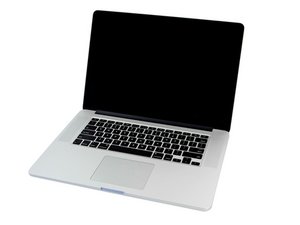Firstly never turn it on again or bother replacing the fuse without finding out if the short is fixed. Which board is this, is this 820-3332-A or a newer one?
You tell if the short has gone away by putting your mulitmeter into ohms/resistance measuring, or diode mode. Put the red probe on ground, being the metal around the screwholes that hold the board into the machine, and the black probe on where backlight would be present. I like to grab the huge chunks of the ceramic caps right next to the backlight circuit. if you tell me which board you have I can tell you where to measure.
Right now you have no idea if the short to ground is in the board, the screen, the LCD connector, or the screen cable.
Also let me know if you have an old piece of junk PC you don't mind blowing up that I will explain to you how to turn into a short finder so you don't have to spend $1000+ on an infrared camera & lab power supply. Near the CPU on a PC motherboard you will see some transistors, one of which supplying something between 900 mv to 2v to the CPU. Solder a piece of wire to where you measure this voltage,and we're going to attach the other end of the wire to the backlight power rail of the board if it IS shorted to ground. Then we attach the ground of the lenovo to the ground of the laptop, and turn the old clunker computer on. So let''s say you attached the 1.7v from the old comp to the backlight rail on the board, you SHOULD see 1.7v on the logic board where backlight power would be would be, but something is shorting backlight power to ground, so that power will go to ground. Now since you attached the ground of the old computer to the ground of the board, that 1.7v will have a DIRECT path to ground through the shorted component. That shorted component will get very hot and you will know exactly what to remove/replace.
The only circumstance under which nothing will get hot is if the short is inside the LCD connector. The LCD connector is just bare metal and will not get hot.
This is backlight. Measure from here to ground, red probe on ground, black probe on the top of this capacitor here in diode mode on your multimeter. What do you get?
crwdns2934105:0crwdne2934105:0
crwdns2934113:0crwdne2934113:0
crwdns2915270:0crwdne2915270:0
crwdns2889612:0crwdne2889612:0
1

 5
5  4
4 
 973
973 

crwdns2944067:025crwdne2944067:0
Fred turner, do you have a (the) model number of the LCD panel itself? BTW isopropyl alcohol will evaporate rather quickly and should not have stained the display. It does sound more like stains from other residue....
crwdns2934271:0crwdnd2934271:0 oldturkey03 crwdne2934271:0
Hey oldturkey! GSX shows the part # as: "661-6529. Part substituted to 661-7171." Does that help? I can try to find further identifying markers on the display itself if you are looking for something specific. Thanks! Fred
crwdns2934271:0crwdnd2934271:0 Fred Turner crwdne2934271:0
Hey, just saw this comment (not getting emails again)...did you need me to do something further, or are you saying you're looking at the schematic for that p/n? Thx, FT
crwdns2934271:0crwdnd2934271:0 Fred Turner crwdne2934271:0
Hey OT-- I don't believe I can get anything from the back of the LCD, since the Retina units are built right into the clamshell. Is there something specific you can point me to? Thx, FT
crwdns2934271:0crwdnd2934271:0 Fred Turner crwdne2934271:0
Okay, thanks, I'll check it when I get home. Is pin #1 closest to the hinge? Do I need to ground to a certain other pin, or just somewhere on the chassis?
crwdns2934271:0crwdnd2934271:0 Fred Turner crwdne2934271:0
crwdns2934275:020crwdne2934275:0